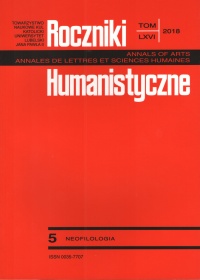Lost in Translations? Maleness, Masculinity, Dandyism, Literature and Criticism
Abstract
The study focuses on the system of translation that combines the figures of dandyism, masculinity, maleness, literature and literary criticism. In an extensive corpus that includes literary works composed between mid-eighteenth century and early-twentieth century, the dandiacal character embodies the more or less problematic association of masculine, feminine and effeminate features. Between conformity and transgressiveness, the hero-dandy reveals the plastic, performative part inherent in individuation, while dramatizing the limits of the grand narratives of heteronormativity and patriarchy.
References
Bourdieu, Pierre. La Domination masculine. Paris: Seuil, 1998.
Butler, Judith. Gender Trouble, Feminism and the Subversion of Identity (1990). New York: Routledge, 2006.
Connell, Robert William. Masculinities (1995). Cambridge: Polity Press, 2017.
François, Anne Isabelle, Edyta Kociubińska, Gilbert Pham-Thanh, Pierre Zoberman. Figures du dandysme. Frankfurt am Main: Peter Lang, 2017.
Hazlitt, William. “The Dandy School” (1827). Complete Works of William Hazlitt in 21 Volumes, London: J. Dent & Sons, 1933, vol. 20, 143–7.
Kossovsky Sedgwick, Eve. Between Men, English Literature and Male Homosocial Desire. New York: Columbia University Press, 1985.
Moers, Ellen. The Dandy, Brummell to Beerbohm. London: Secker & Warburg, 1960.
Pham-Thanh, Gilbert. Du dandysme en Angleterre au XIXe siècle et de ses répercussions en France. Villeneuve d’Asq: Presses Universitaires du Septentrion, 2000.
Sontag, Susan. “Notes on ‘Camp’” (1964). In Against Interpretation and Other Essays. New York: Picador, 1966.
Copyright (c) 2018 Roczniki Humanistyczne

This work is licensed under a Creative Commons Attribution-NonCommercial-NoDerivatives 4.0 International License.





